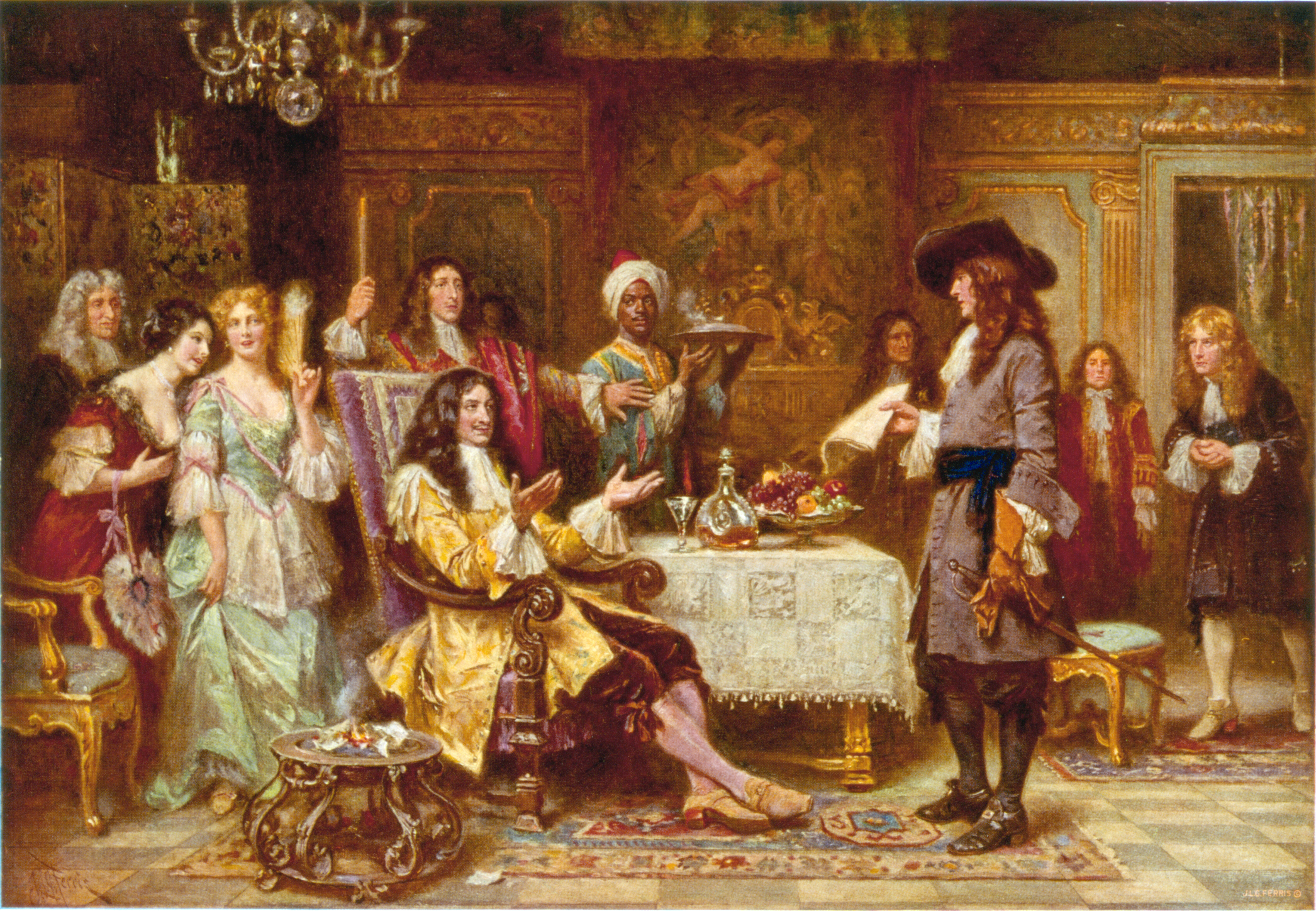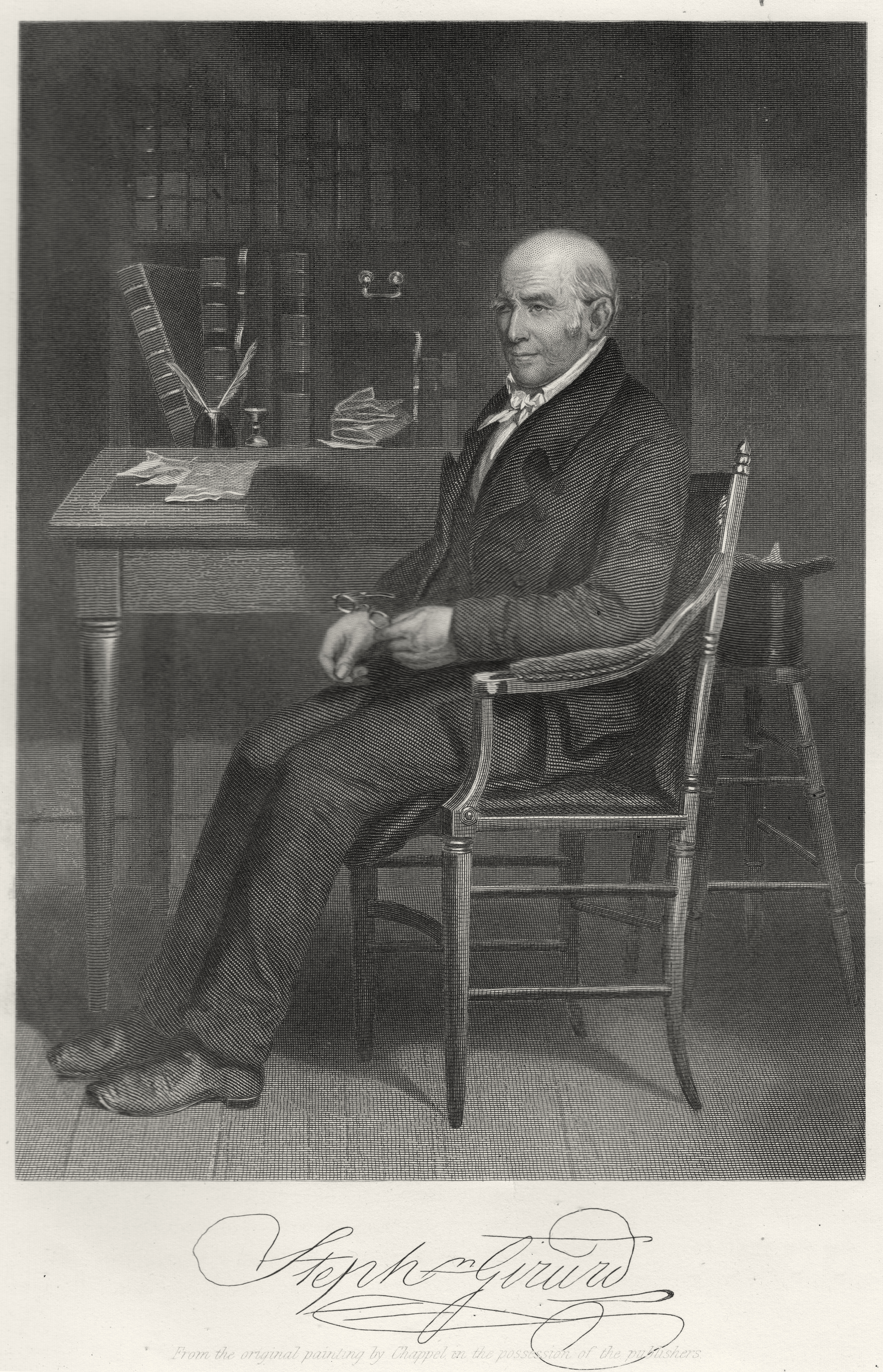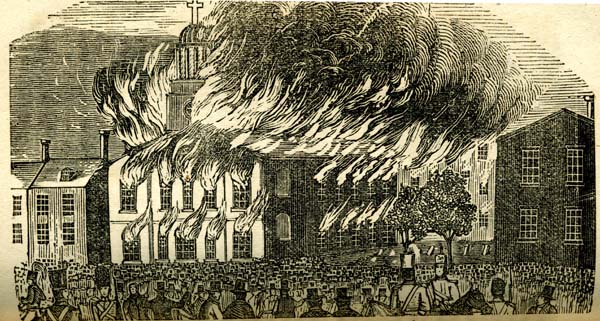|
St. Augustine Church, Philadelphia
St. Augustine Catholic Church, also called Olde St. Augustine's, is a historic Catholic Church, Catholic church in Philadelphia, Pennsylvania, United States. Consecrated in 1848, the Palladian architecture, Palladian-style church was designed by Napoleon LeBrun. It is listed on the National Register of Historic Places. The church was built to replace the Old St. Augustine Church which was completed in 1801. The first Order of St. Augustine, Augustinian church founded in the United States, the original St Augustine housed the Liberty Bell's "Sister Bell". The church was burned down in the anti-Catholic Philadelphia Nativist Riots on May 8, 1844. The church sued the city of Philadelphia for not providing it with adequate protection. The money awarded to the church went to rebuilding the current church, which broke ground on May 27, 1847. Organizations founded by the church led to the creation of both Villanova University and the Philadelphia Orchestra. History Old church Father ... [...More Info...] [...Related Items...] OR: [Wikipedia] [Google] [Baidu] |
Philadelphia
Philadelphia ( ), colloquially referred to as Philly, is the List of municipalities in Pennsylvania, most populous city in the U.S. state of Pennsylvania and the List of United States cities by population, sixth-most populous city in the United States, with a population of 1,603,797 in the 2020 United States census, 2020 census. The city is the urban core of the Philadelphia metropolitan area (sometimes called the Delaware Valley), the nation's Metropolitan statistical area, seventh-largest metropolitan area and ninth-largest combined statistical area with 6.245 million residents and 7.379 million residents, respectively. Philadelphia was founded in 1682 by William Penn, an English Americans, English Quakers, Quaker and advocate of Freedom of religion, religious freedom, and served as the capital of the Colonial history of the United States, colonial era Province of Pennsylvania. It then played a historic and vital role during the American Revolution and American Revolutionary ... [...More Info...] [...Related Items...] OR: [Wikipedia] [Google] [Baidu] |
Stephen Girard
Stephen Girard (born Étienne Girard; May 20, 1750 – December 26, 1831) was a French-born American banker and philanthropist. Born in Bordeaux, Girard subsequently immigrated to the Thirteen Colonies where he established himself in the Banking in the United States, American banking industry. During the War of 1812, Girard single-handedly saved the federal government of the United States from bankruptcy by personally financing the American war effort. Eventually accumulating a large estate which included a slave plantation in Louisiana, a 2007 article in ''Fortune Magazine'' estimated that he was the List of richest Americans in history, fourth-richest American in history. Having no children, Girard devoted much of his fortune to philanthropy, in particular the education and welfare of orphans, and his estate continues to fund philanthropic endeavors in the present day.Wildes, 1943. Early life Girard was born in Bordeaux, France on May 20, 1750, the son of a sea captain.Robe ... [...More Info...] [...Related Items...] OR: [Wikipedia] [Google] [Baidu] |
Kensington District, Pennsylvania
Kensington District, or The Kensington District of the Northern Liberties, was one of the twenty-nine municipalities that formed Philadelphia County, Pennsylvania, United States prior to the enactment of the Act of Consolidation, 1854, when it became incorporated into the newly expanded City of Philadelphia. Lehigh Avenue roughly bounded the district to the north; Germantown Avenue and 6th Street to the west; Cohocksink Creek to the south; and an L-shaped line formed by Frankford Avenue, Norris Street, and York Street to its northeast. The Delaware River was the eastern boundary. Today the area would include the Philadelphia neighborhoods of Olde Kensington, West Kensington and Fishtown, as well as portions of the neighborhoods of Ludlow, Hartranft, Fairhill, Northern Liberties and the current Kensington. The District of Kensington was a self-governing district between the years 1820 and 1854. History Captain Anthony Palmer originally laid out Kensington as a town in t ... [...More Info...] [...Related Items...] OR: [Wikipedia] [Google] [Baidu] |
Philadelphia Nativist Riots
The Philadelphia nativist riots (also known as the Philadelphia Prayer Riots, the Bible Riots and the Native American Riots) were a series of riots that took place on May 68 and July 67, 1844, in Philadelphia, Pennsylvania, United States and the adjacent District#United States, districts of Kensington District, Pennsylvania, Kensington and Southwark, Philadelphia, Southwark. The riots were a result of rising Anti-Catholicism, anti-Catholic sentiment at the growing population of Irish Catholic immigrants. The government brought in over a thousand militia—they confronted the Nativism (politics), nativist mobs and killed or wounded hundreds of anti-Catholic rioters. In the five months leading to the riots, Nativism (politics), nativist groups had been spreading a false rumor that History of the Catholic Church in the United States, Catholics were trying to remove the Bible from public schools. A nativist rally in Kensington erupted in violence on May 6 and started a deadly riot that ... [...More Info...] [...Related Items...] OR: [Wikipedia] [Google] [Baidu] |
Bible
The Bible is a collection of religious texts that are central to Christianity and Judaism, and esteemed in other Abrahamic religions such as Islam. The Bible is an anthology (a compilation of texts of a variety of forms) originally written in Hebrew, Aramaic, and Koine Greek. The texts include instructions, stories, poetry, prophecies, and other genres. The collection of materials accepted as part of the Bible by a particular religious tradition or community is called a biblical canon. Believers generally consider it to be a product of divine inspiration, but the way they understand what that means and interpret the text varies. The religious texts were compiled by different religious communities into various official collections. The earliest contained the first five books of the Bible, called the Torah in Hebrew and the Pentateuch (meaning 'five books') in Greek. The second-oldest part was a collection of narrative histories and prophecies (the Nevi'im). The third co ... [...More Info...] [...Related Items...] OR: [Wikipedia] [Google] [Baidu] |
Nativism (politics)
Nativism is the political policy of promoting or protecting the interests of native-born or indigenous people over those of immigrants, including the support of anti-immigration and immigration-restriction measures. Definition According to Cas Mudde, a University of Georgia professor, nativism is a largely American notion that is rarely debated in Western Europe or Canada; the word originated with mid-19th-century political parties in the United States, most notably the Know Nothing party, which saw Catholic immigration from nations such as Germany and Ireland as a serious threat to native-born Protestant Americans. In the United States, nativism does not refer to a movement led by Native Americans, also referred to as American Indians. Causes According to Joel S. Fetzer, opposition to immigration commonly arises in many countries because of issues of national, cultural, and religious identity. The phenomenon has especially been studied in Australia, Canada, New Ze ... [...More Info...] [...Related Items...] OR: [Wikipedia] [Google] [Baidu] |
Irish Catholic
Irish Catholics () are an ethnoreligious group native to Ireland, defined by their adherence to Catholic Christianity and their shared Irish ethnic, linguistic, and cultural heritage.The term distinguishes Catholics of Irish descent, particularly in contexts of national identity, political history, and diaspora, from other Catholic populations globally. They constitute the majority population in the Republic of Ireland, where approximately 3.9 million people identified as Catholic in the 2022 census, and a significant minority in Northern Ireland, with around 820,000 adherents. The Irish diaspora has established Irish Catholic communities worldwide, particularly in the United States, Canada, Australia, and the United Kingdom, where they have played a major role in shaping cultural, religious, and political landscapes. Historically, Irish Catholics experienced systemic discrimination, especially under British rule, through the imposition of Penal Laws in the 17th and 18th cen ... [...More Info...] [...Related Items...] OR: [Wikipedia] [Google] [Baidu] |
Independence Hall
Independence Hall is a historic civic building in Philadelphia, where both the United States Declaration of Independence, Declaration of Independence and the Constitution of the United States were debated and adopted by the Founding Fathers of the United States. The building, which is the centerpiece of Independence National Historical Park, was designated a World Heritage Site in 1979. It is one of the most recognizable buildings in United States and an example of American Georgian architecture which is characterized using exposed brick creating a visual of clean lines, proportions and symmetry. The architecture aimed to create a generous sense of space and natural light. Construction of Independence Hall, which was initially called Pennsylvania State Capitol#History, Pennsylvania State House, was completed in 1753. It served as the List of state and territorial capitols in the United States, first capitol of the colonial era Province of Pennsylvania. Even back then, it was ... [...More Info...] [...Related Items...] OR: [Wikipedia] [Google] [Baidu] |
Cupola
In architecture, a cupola () is a relatively small, usually dome-like structure on top of a building often crowning a larger roof or dome. Cupolas often serve as a roof lantern to admit light and air or as a lookout. The word derives, via Italian language, Italian, from lower Latin ''cupula'' (classical Latin ''cupella''), (Latin ''cupa''), indicating a vault resembling an upside-down cup. The cylindrical drum underneath a larger cupola is called a tholobate. Background The cupola evolved during the Renaissance from the older Oculus (architecture), oculus. Being weatherproof, the cupola was better suited to the wetter climates of northern Europe. The chhatri, seen in Architecture of India, Indian architecture, fits the definition of a cupola when it is used atop a larger structure. Cupolas often serve as a Bell tower, belfry, Belvedere (structure), belvedere, or roof lantern above a main roof. In other cases they may crown a spire, tower, or Turret (architecture), turret. B ... [...More Info...] [...Related Items...] OR: [Wikipedia] [Google] [Baidu] |
William Hogan (priest)
William Hogan was an American former Roman Catholic priest. Hogan was born in Ireland and educated at Maynooth College. He became a priest before emigrating to the United States in 1819. Originally working as a priest of , he came to and was admitted to the diocese by the diocesan administrator. [...More Info...] [...Related Items...] OR: [Wikipedia] [Google] [Baidu] |
Excommunication
Excommunication is an institutional act of religious censure used to deprive, suspend, or limit membership in a religious community or to restrict certain rights within it, in particular those of being in Koinonia, communion with other members of the congregation, and of receiving the sacraments. It is practiced by all of the ancient churches (such as the Catholic Church, Oriental Orthodoxy, Oriental Orthodox churches and the Eastern Orthodoxy, Eastern Orthodox churches) as well as by other Christian denominations; however, it is also used more generally to refer to similar types of institutional religious exclusionary practices and shunning among other religious groups. The Amish have also been known to excommunicate members that were either seen or known for breaking rules, or questioning the church, a practice known as shunning. Jehovah's Witnesses use the term disfellowship to refer to their form of excommunication. The word ''excommunication'' means putting a specific indiv ... [...More Info...] [...Related Items...] OR: [Wikipedia] [Google] [Baidu] |
Henry Conwell
Henry Conwell ( – 22 April 1842) was an Irish-born Catholic prelate who served as Bishop of Philadelphia from 1820 until his death. He became a priest in 1776 and served in that capacity in Ireland for more than four decades. After the Pope declined to appoint him Archbishop of Armagh, the diocese in which he served as Vicar General, he was instead installed as the second Bishop of Philadelphia in 1819. Conwell took up the post at an advanced age and spent much of his time there feuding with the lay trustees of his parishes, especially those of St. Mary's Church in Philadelphia. When Conwell removed and excommunicated William Hogan, a controversial priest at St. Mary's, the parish trustees instead rejected Conwell's authority, creating a minor schism. The two sides partially reconciled by 1826, but the Vatican hierarchy believed Conwell had ceded too much power to the laymen in the process and recalled him to Rome. Although he retained his position, Conwell was compel ... [...More Info...] [...Related Items...] OR: [Wikipedia] [Google] [Baidu] |







